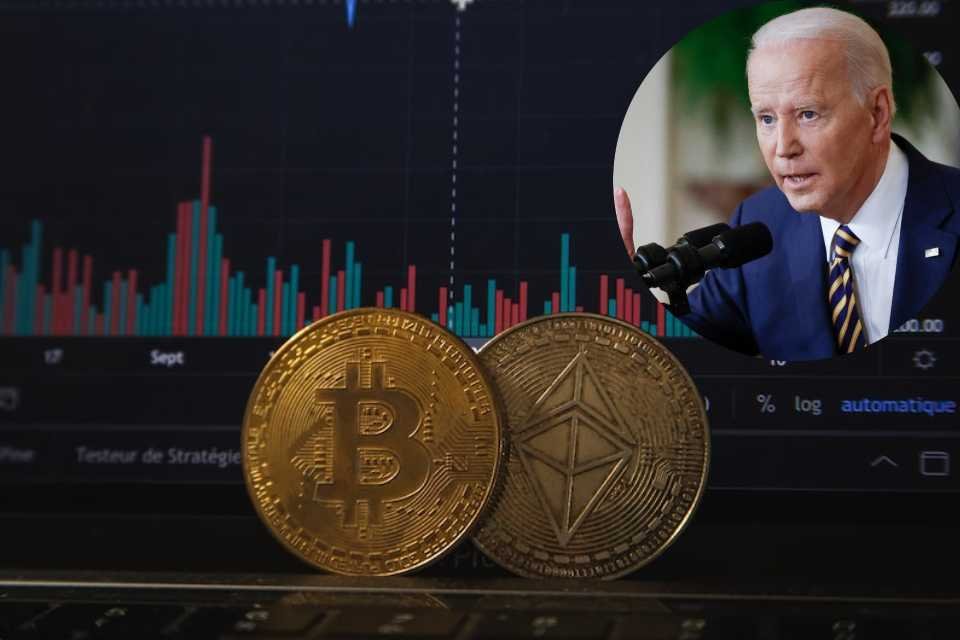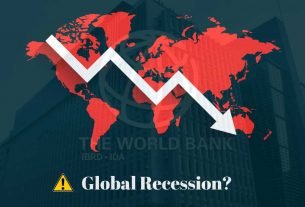The Biden White House just unveiled the first-ever framework for regulating crypto in US. This regulation in the United States, outlines how the financial services sector should develop to facilitate borderless transactions and how to combat fraud in the digital asset market.

Although no laws have yet been mandated, the new instructions use the power of already-existing regulators like the Securities and Exchange Commission and the Commodity Futures Trading Commission. However, investors in this emerging asset class as well as the entire crypto business have been interested in the long-awaited direction from Washington.
Key Highlights:
l The Biden White House has quite recently delivered its very first system on what crypto guideline in the U.S. ought to seem to be.
l The structure frames the manners by which the monetary administrations industry ought to advance to make borderless exchanges simpler, as well as how to get serious about extortion in the computerized resource space.
l The new rules observe a chief request gave in Spring, in which President Joe Biden approached government organizations to look at the dangers and advantages of digital forms of money and issue official reports on their discoveries.
The framework comes after President Joe Biden called on federal agencies to investigate the advantages and disadvantages of cryptocurrencies and publish public reports on their findings in an executive order released in March.
Government agencies have been working to create their own frameworks and policy recommendations for the past six months to address the half-dozen priorities listed in the executive order, including financial inclusion, responsible innovation, countering illicit finance, promoting financial stability, and protecting consumers and investors. These suggestions make up the first “whole-of-government approach” to business regulation.
The National Economic Council head Brian Deese and national security adviser Jake Sullivan stated in a statement that the new standards are intended to position the nation.
Here are some of the key takeaways from the White House’s new crypto framework:
Combating Illicit Financing:
The White House’s new framework for crypto regulation includes a section on combating criminal behavior in the sector, and the suggested restrictions seem to have some actual bite.
A White House fact sheet states that the president will consider whether to ask Congress to amend the Bank Secrecy Act, anti-tip-off laws, and laws against unlicensed money transmitting to explicitly apply to providers of digital asset services, such as digital asset exchanges and nonfungible token (NFT) platforms.
The president is also considering whether to ask Congress to increase the fines for unauthorized money transmission and whether to change some federal laws to enable the Department of Justice to pursue crimes involving digital assets in any location where a victim of those crimes is discovered.
The fact sheet states that Treasury will finish its assessment of the risk of illegal finance related to decentralized finance by the end of February 2023 and its examination of non-fungible coins by the end of July 2023.
The market for digital assets is plagued with crime. The Federal Trade Commission’s investigation shows that since the beginning of 2021, more than $1 billion in cryptocurrency has been lost to fraud.
Last month, the SEC said it charged 11 individuals for their jobs in making and advancing a false crypto pyramid and Ponzi conspire that raised more than $300 million from a great many retail financial backers around the world, remembering for the US. In the mean time, in February, U.S. authorities seized $3.6 billion worth of bitcoin — their greatest capture of digital forms of money ever — connected with the 2016 hack of crypto trade Bitfinex.
Another Sort of Computerized Dollar:
The system likewise focuses to the potential for “critical advantages” from a U.S. national bank computerized money, or CBDC, which you can consider an advanced type of the U.S. dollar.
This moment, there are a few distinct sorts of computerized U.S. dollars.
Sitting in business financial balances the nation over are electronic U.S. dollars, which are to some extent upheld by holds, under a framework known as fragmentary save banking. As the name suggests, the bank holds in its stores a negligible part of the bank’s store liabilities. Moving this type of cash starting with one bank then onto the next or starting with one country then onto the next works on heritage monetary rails.
There are likewise a spate of USD-fixed stablecoins, including Tie and USD Coin. Despite the fact that pundits have addressed whether tie has sufficient dollar stores to back its money, it stays the biggest stablecoin on earth. USD Coin is upheld by completely held resources, redeemable on a 1:1 reason for U.S. dollars, and represented by Center, a consortium of directed monetary organizations. It is additionally somewhat simple to utilize regardless of where you are.
Then, at that point, there’s the speculative computerized dollar that would be the Central bank’s interpretation of a CBDC. This would basically be a computerized twin of the U.S. dollar: Completely controlled, under a focal power, and with the full confidence and support of the country’s national bank.
“A dollar in CBDC structure is a responsibility of the national bank. The Central bank needs to take care of you,” said Ronit Ghose, who heads fintech and computerized resources at Citi Worldwide Experiences.
Central bank Seat Jerome Powell recently said the fundamental motivator for the U.S. to send off its own national bank computerized money is dispense with the utilization case for crypto coins in America.
“You wouldn’t require stable coins; you wouldn’t require cryptographic forms of money, in the event that you had a computerized U.S. money,” Powell said. “I feel that is one of the more grounded contentions in support of its.”
In the White House’s new system, it focuses to the way that a U.S. CBDC could empower an installment framework that is “more proficient, gives an establishment to additional mechanical development, works with quicker cross-line exchanges, and is naturally economical.”
“It could advance monetary consideration and value by empowering access for an expansive arrangement of customers,” proceeds with the report.
With that in mind, the organization encourages the Fed to proceed with its continuous exploration, trial and error and assessment of a CBDC.
Defending Monetary Solidness:
National investors and U.S. legislators have for quite a long time wiped over the ascent of stable coins, a particular subset of digital forms of money that have a worth fixed to a true resource, for example, a government issued money like the U.S. dollar or an item like gold.
These nongovernmental computerized tokens are progressively being utilized in homegrown and global exchanges, which is startling for national banks since they don’t have anything to do with how this space is managed.
In May, the breakdown of TerraUSD, one of the most famous U.S. dollar-fixed stablecoin projects, cost financial backers a huge number of dollars as they took out in a frenzy that some have contrasted with a bank run. Boundless purchase in — and public service announcements — from regarded monetary foundations loaned validity to the undertaking, further driving the account that the situation was genuine.
The collapse of this stablecoin project prompted a progression of bankruptcies that eradicated almost $600 billion in riches, as per the White House.
“Computerized resources and the standard monetary framework are turning out to be progressively interwoven, making channels for disturbance to have overflow impacts,” as indicated by the White House truth sheet.
The system proceeds to single out stablecoins, advance notice that they could make problematic runs in the event that not matched with suitable guideline.
To make stablecoins “more secure,” the organization says the Depository will “work with monetary foundations to reinforce their ability to distinguish and relieve digital weaknesses by sharing data and advancing a large number of informational collections and scientific instruments,” as well as collaborate with different organizations to “recognize, track, and break down arising key dangers that connect with computerized resource markets.”
Those endeavors will likewise occur working together with global partners, including the Association for Monetary Collaboration and Improvement and the Monetary Soundness Board.


